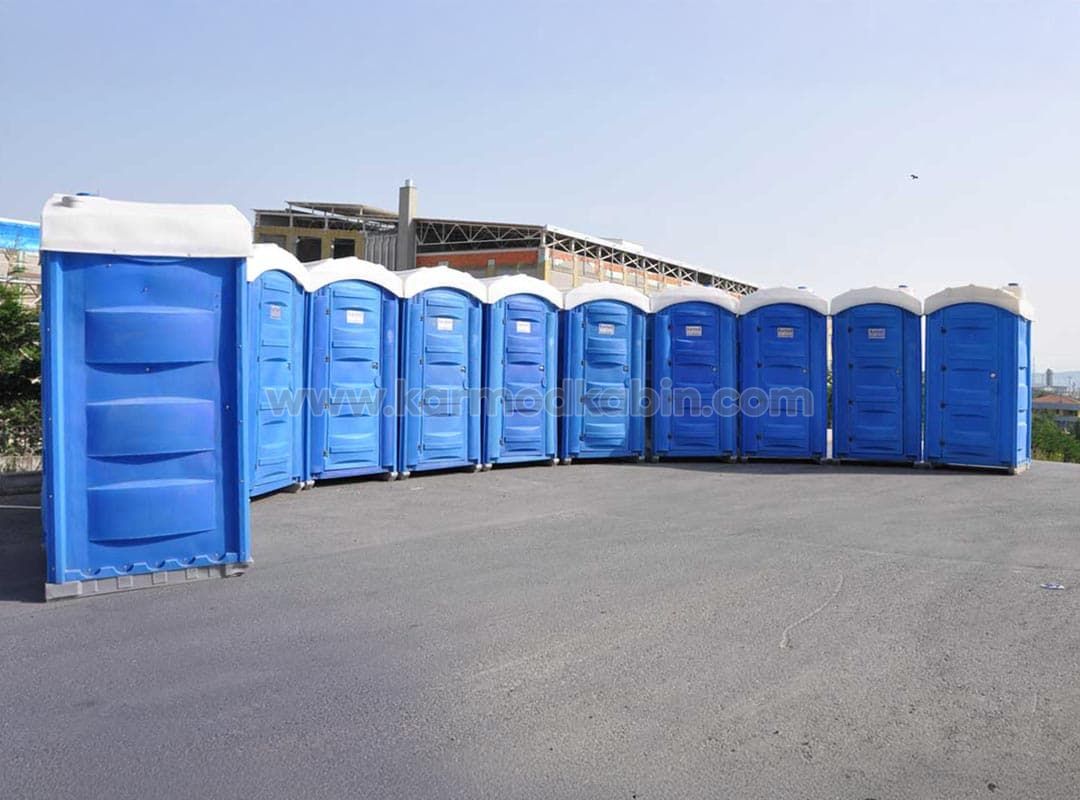
Portable toilets may look similar from the outside, but the material they are made of makes a big difference in performance, durability, and user comfort. Whether you are organizing a large outdoor event, managing a construction site, or investing in long-term sanitary solutions, the choice between plastic, fiberglass, and composite portable toilets can directly affect cost, maintenance, and customer satisfaction.
While plastic models are widely known for being cost-effective and lightweight, fiberglass stands out for its strength and long-lasting use. On the other hand, composite toilets represent the latest innovation, combining modern materials for a premium balance of comfort, hygiene, and resilience. Understanding these key differences is essential if you want to make the right investment and ensure your project runs smoothly.
When people think of portable toilets, the first thing that comes to mind is convenience. However, what truly defines the quality of a portable toilet is the material it is built from. The material influences not only the durability and hygiene level but also how comfortable and practical the unit will be in everyday use. For businesses, event planners, or construction managers, overlooking this factor can mean higher maintenance costs, shorter lifespan, and less satisfied users.
From lightweight plastic units designed for quick setup, to fiberglass cabins built for heavy-duty applications, and composite toilets that deliver premium hygiene standards—each material has its own strengths and weaknesses. By analyzing these differences, you can align your choice with your project’s budget, location, and expected usage. This ensures you don’t just rent or buy a portable toilet, but rather make a smart, long-term investment.
Plastic portable toilets are the most common choice on the market, mainly because they are lightweight, easy to transport, and budget-friendly. Their simple design makes them ideal for short-term events such as festivals, outdoor gatherings, and temporary work sites. Thanks to their quick installation process, they can be set up almost anywhere without requiring special equipment, which saves both time and labor costs.

In addition to their affordability, plastic portable toilets are designed with functionality in mind. They typically include basic sanitation features that meet user needs, while remaining easy to clean and maintain. For projects where cost control is a priority, they represent a smart solution. However, their durability is limited compared to fiberglass or composite options, making them better suited for temporary or low-intensity use.
Fiberglass portable toilets are known for their exceptional durability and resistance. Unlike plastic models, fiberglass does not easily crack or warp, even under heavy use or in extreme weather conditions. This makes them a reliable option for construction sites, industrial facilities, and outdoor venues where long-term performance is crucial. Their sturdy design also means fewer replacements and lower repair costs over time, which is an important advantage for businesses looking to optimize their budget.
Beyond durability, fiberglass units also offer a higher level of comfort. Their smoother surfaces and more solid construction create a cleaner, more pleasant experience for users. They often feature enhanced ventilation and better insulation, which improves hygiene and reduces odors. If your goal is to provide a professional, long-lasting sanitation solution, fiberglass toilets clearly stand out.
Key benefits of fiberglass portable toilets include:
Composite portable toilets represent the newest generation of sanitation solutions. Made from advanced composite materials, these units combine the strength of fiberglass with the lightweight practicality of plastic, resulting in a premium product designed for high-demand environments. Their modern structure not only makes them durable but also ensures a sleek appearance, which is particularly important for upscale events, VIP areas, or corporate functions where image matters as much as function.
One of the strongest advantages of composite models is their ability to deliver a near-permanent level of hygiene. The materials used are less porous, meaning they resist bacteria build-up and are easier to sanitize. This translates into a consistently clean and fresh experience for users, even during extended periods of use. For companies and event planners looking to stand out, composite toilets signal quality and attention to detail.
Why choose composite portable toilets?
When deciding between plastic, fiberglass, and composite portable toilets, it’s essential to consider how much effort and cost will go into maintenance and how long each option will actually last. Plastic toilets are quick to clean but tend to wear out faster, especially when exposed to extreme weather or heavy usage. They are best suited for short-term or temporary setups where longevity is less critical.

Fiberglass toilets, on the other hand, offer much more stability. Their solid construction means fewer cracks, less fading, and a significantly longer service life. This makes them a preferred choice for long-term projects, construction sites, or areas where regular use is guaranteed. Composite toilets take this one step further by combining durability with advanced hygiene technology. They not only last longer but also stay cleaner for extended periods, reducing the overall maintenance workload.
Maintenance & Longevity Comparison at a Glance:
By weighing these factors, decision-makers can choose a solution that doesn’t just meet immediate needs but also delivers value over time.
At first glance, plastic portable toilets seem like the obvious choice because of their low upfront cost. They are inexpensive to purchase or rent, making them a practical solution for events or short-term projects. However, their limited durability means they often require frequent replacement or repair, which increases costs over time. What looks budget-friendly at the start can quickly turn into recurring expenses.
Fiberglass toilets, while more expensive initially, provide a much stronger return on investment. Their resistance to harsh conditions and long lifespan reduce the need for constant maintenance. This means fewer replacements, less downtime, and a more stable long-term cost structure. Composite toilets, as the premium option, demand the highest initial investment, but they deliver unmatched value in hygiene, durability, and brand image. For organizations that care about customer experience and reputation, this added value can far outweigh the price difference.
Value insights to consider:
Choosing the right option is not just about the purchase price—it’s about understanding the true value over the entire lifecycle of the portable toilet.
The right portable toilet material depends largely on the nature of your project, budget, and expected usage. If you are planning a weekend festival or a short community gathering, plastic portable toilets are often sufficient. Their affordability and ease of setup make them the go-to solution for short-term needs where long-lasting durability is not a priority.
For construction sites, industrial projects, or locations with heavy daily use, fiberglass toilets offer the stability and reliability you need. Their longer lifespan and stronger resistance to wear and tear mean fewer interruptions and lower long-term costs. On the other hand, if your event requires a premium sanitation experience—such as VIP areas, weddings, or corporate functions—composite toilets provide both modern aesthetics and superior hygiene standards that will leave a lasting impression on guests.
Quick decision guide:
By aligning your choice with the specific requirements of your project, you ensure both practicality and satisfaction—delivering a solution that works not only for today but for the long run.
Sustainability has become a critical factor in the decision-making process for businesses, event planners, and construction companies. When it comes to portable toilets, the choice of material directly influences the overall environmental footprint of the project. Plastic units, while lightweight and easy to manufacture, often have a shorter lifespan. This means they are replaced more frequently, which can contribute to higher waste over time unless recycling programs are in place.
Fiberglass toilets, with their stronger structure and longer lifespan, reduce the frequency of replacements and therefore generate less waste in the long run. However, the production process for fiberglass can be more resource-intensive compared to plastic. Composite portable toilets stand out as a more eco-friendly innovation. Many models are designed using recyclable materials and advanced manufacturing processes that minimize environmental impact while maximizing durability.
Sustainability insights at a glance:
For organizations that prioritize green practices and corporate responsibility, composite toilets often provide the best balance between durability and environmental sustainability.
When users step into a portable toilet, their comfort and hygiene perception are shaped immediately by the material and design. Plastic toilets, while practical, often feel basic. They offer the essentials but may lack insulation and ventilation, which can sometimes lead to unpleasant odors or temperature discomfort during extreme weather. For short-term use, they fulfill their purpose, but they are rarely associated with comfort.
Fiberglass units, on the other hand, provide a noticeably improved experience. Their sturdier build creates a more stable feel, and smoother surfaces make cleaning easier, resulting in a fresher environment. Better insulation means they stay cooler in summer and warmer in winter, adding to user satisfaction. Composite toilets take this even further by combining innovation with premium design. Many composite models feature ergonomic interiors, advanced odor-control systems, and modern aesthetics, giving users a professional and clean impression that aligns with high-standard events.
Comfort comparison:
When providing a positive experience for users is a top priority, choosing fiberglass or composite toilets can make a significant difference in how your project or event is remembered.
One of the most important aspects of portable toilets is, as the name suggests, their portability. Plastic toilets are the easiest to transport and install thanks to their lightweight structure. They can be moved quickly with minimal equipment, making them ideal for festivals, community gatherings, or any situation that requires fast deployment. Their simplicity also means that setup costs are usually lower.
Fiberglass toilets, while much stronger, are also heavier and require more care during transportation. Their installation might involve additional handling equipment, but once in place, they provide long-term stability. Composite toilets strike a balance between the two. They are lighter than fiberglass yet stronger than standard plastic, giving them both portability and resilience. For event planners and contractors, this versatility makes composite toilets a smart solution for projects that demand frequent relocation without compromising quality.
Installation overview:
Selecting the right material based on portability ensures not only efficiency in setup but also smoother operations throughout the project or event.
Different industries and events have very specific requirements when it comes to portable toilets. The material choice can directly influence efficiency, cost, and user satisfaction. Plastic portable toilets are most commonly used for short-term outdoor events such as concerts, sports gatherings, and festivals. Their lightweight design and affordability make them the practical option when large numbers of units are needed quickly.
Fiberglass portable toilets are the go-to solution for construction companies, mining sites, and other industrial environments. Their resilience against rough handling and harsh conditions ensures they can handle long-term, heavy-duty use. They also work well in semi-permanent installations where maintenance costs need to be minimized. Composite toilets cater to high-profile applications. Weddings, VIP sections at festivals, luxury resorts, and corporate events often prefer composite models because they not only deliver durability but also create a premium experience for guests.
Best-fit applications:
By aligning the material choice with the nature of the industry, businesses can ensure they provide a sanitation solution that is both cost-effective and aligned with user expectations.
Choosing between plastic, fiberglass, and composite portable toilets is not just a technical decision—it’s an investment in comfort, hygiene, and long-term value. Every project has unique needs, and finding the right balance between cost, durability, and appearance is essential. That’s why our team is here to guide you through every step.
With our expertise, you won’t just get a portable toilet—you’ll get a tailored sanitation solution designed to fit your budget, project scale, and user expectations. From initial consultation to delivery and setup, we make the process seamless and reliable.
Take the next step today:
Contact us now and let’s plan the right solution together—so your project benefits from the perfect balance of affordability, durability, and premium quality.